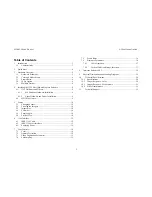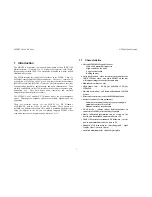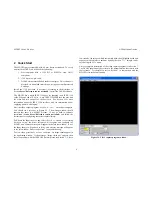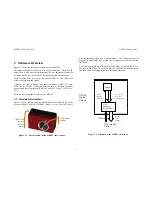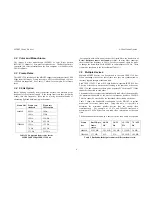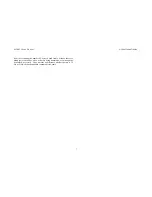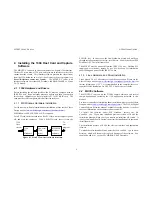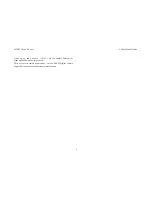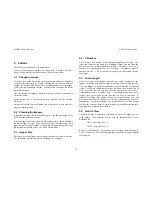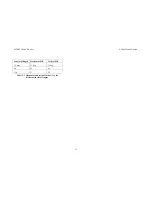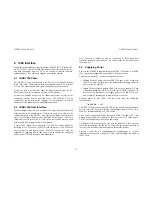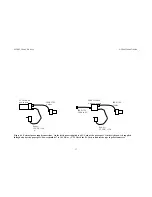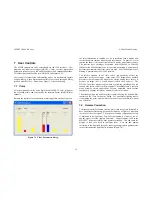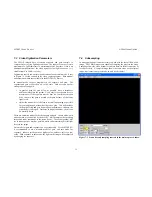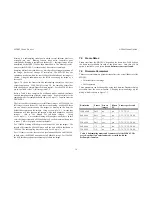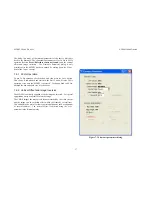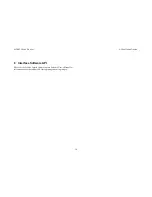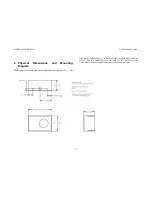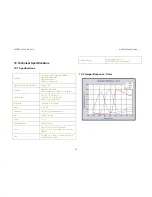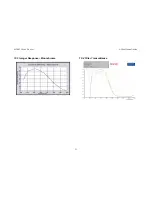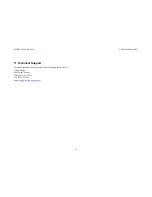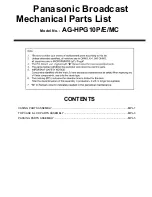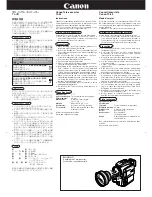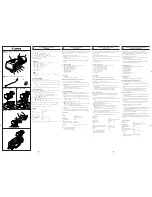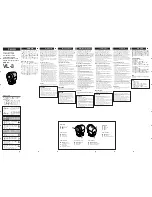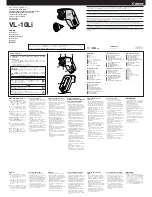
MDCS2
U
SER
’
S
M
ANUAL
©
2004
V
IDERE
D
ESIGN
16
Binning
is a subsampling technique in which several adjacent pixels are
averaged into one. Binning reduces video noise, sometimes quite
substantially. Binning is available on the host PC – the larger image is first
transferred on the IEEE 1394 bus, then binned down. The binning is color-
aware for the MDCS2-C, so that pixels of like color are combined.
Sampling differs from
subwindowing
, which picks a rectangular portion of
the image, but doesn’t change its resolution. The MDCS2 has one
subwindow mode, in which the center 640x480 subwindow of the imager is
chosen. Using the subwindow has the effect of zooming the image by a
factor of 2.
Figure 7-2 shows the frame size and subsampling controls on the video
capture application. With DCAM version 2.0, the sampling control has
been changed to a simple Frame Division control. For the MDCS2, there
are two possible values, 1 (full image) and 1/2.
Refer to Table 4 for a complete list of allowed modes, and how the frame
size and sampling setting affect the output image. Explicit control over the
sampling mode is accomplished with the
SetSample()
function from the
DCAM API.
The first four lines of the table are for full-frame images. At 1280x960, the
full image is sent to the host PC, and there is no binning. At 640x480, there
are two choices: decimation on the imager, or binning on the host; the
default is decimation on the imager. Using
SetSample(2,1)
means that
decimation will take place on the imager, which then transmits a 640x480
imager – this is the default for full-frame images. Using
SetSample(1,2)
means that binning will take place on the host. In this
case, the imager transmits all 1280x960 pixels, so the maximum frame rate
is lower. This is the greyed-out line in the table.
For 320x240, binning will take place on the host PC and the imager. The
imager will transmit a 640x480 image, and the host will bin that down to
320x240. The subsampling must be set with
SetSample(1,2)
.
For 1/2 frame size rates, there are two resolutions: 640x480 and 320x240.
In both cases, the MDCS2 transmits the full 640x480 image. For 320x240,
the SVS interface software uses binning to reduce the image.
7.5 Frame
Rates
Frame rates from the MDCS2/-C depend on the frame size. Table 4 shows
the frame rates available for each of the frame sizes. Note that a 50 Hz
option is available – see Section
Error! Reference source not found.
7.6 Firmware
Parameters
There are several firmware parameter that affects the overall behavior of the
MDCS2.
•
Vertical offset of the image
•
50 Hz operation
These parameters can be changed by using the Firmware Parameter dialog,
accessible from the
dcam
menubar. Choosing this menu brings up the
dialog, which is shown in Figure 7-3.
Resolution Frame
Dec
on
imager
Bin on
PC
Frames per Second
1280 x 960
Full
no
no
3.75, 7.5, 15
640 x 480
Full
yes
no
3.75, 7.5, 15, 30, 60
640 x 480
Full
no
yes
3.75, 7.5, 15
320 x 240
Full
yes
yes
3.75, 7.5, 15, 30, 60
640 x 480
1/2
no
no
3.75, 7.5, 15, 30, 60
320 x 240
1/2
no
yes
3.75, 7.5, 15, 30, 60
Table 4 Subsampling modes and frame rates for the MDCS2. The
greyed-out line is a non-default mode, accessible with the
SetSample() function.

